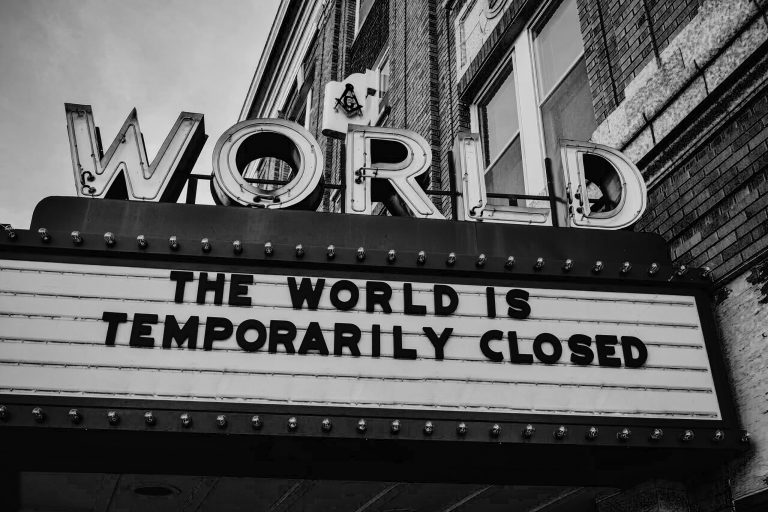I keep hearing people say, “I can’t wait for things to go back to normal” or “I wish things would just go back to the way they were before COVID-19.” My favorite is, “It’s just a variation of the flu; can’t we just get on with our lives?”
The short answer is, “No.”
I’ll refrain from diving into the empty hole of politics. Although, I do wonder when health, safety, and genuine care and compassion for fellow humans were somehow defined by and confined to a political ideology. But I digress.
After hearing questions about and yearning for a return to “normalcy” dozens of times, I’ve taken my own practical advice to startup founders and turned the volume up on my own mindfulness. My “Spidey-senses” got to tingling. As I began to focus on what was happening in the world and could take full stock of how the COVID-19 situation was making me and lots of people around me feel, I tried to grasp the implications and envision how the future of the workplace will look.
I realized the world will never be the same.
While most people have been asking, “When will things get back to normal?” I’ve been thinking, what will the new normal be like and what will people and businesses need to thrive in it? So, it’s with this mindset I write today’s StartupHeat post to process my own thinking and opine on the influences, challenges, and even the opportunities before us.
The Situation for Startups From My Vantagepoint
Instinctively (and, perhaps a bit selfishly), as an entrepreneur, my mind immediately jumps to: where might there be investment opportunities for my company Mercury Fund’s capital and also for me, personally? But, again, I remind myself to follow my own advice. I should focus on the problem instead of the solution.
The real problem – the truth – is that the old normal is gone forever and all of us in the startup business world need to understand what the new normal will look like and how it can be influenced. Only then can we start to think about what will be needed in the new normal.
My next step in considering the nature of this COVID-19 problem was to dive deep into the research hole. After all, since like most people I’m working virtually and staying distanced, I’ve had the time. And in that spare time, I’ve been reading, filtering, and trying to digest every informed perspective I can find by industry analysts, leaders, and media experts/influencers, as well as other thought leaders in the VC and PE investor communities about what our new normal may look like.
While there will be many macro and micro implications to this pandemic, for our purposes at StartupHeat, my primary focus will be on how COVID-19 is reshaping the business and financial resources landscape and what impact those changes will have on startup opportunities for founders and investment opportunities for investors. Based on my review, the following is what I think lies ahead of us:
Business Implications of COVID-19
It’s probably safe to say that the future of work – the workplace, the workforce, and work itself – will be altered both for the short- and long-term. Businesses must assess short- and long-term needs as they respond immediately to the effects this pandemic is having and will have on their organizations, physically and financially.
The Workplace
- Decentralized/Work from home (What is the new relationship between WFH and maximizing the culture through proximity?)
- Even more reliant on technology to remain connected (How do we protect the business and build redundancy in a connected world…is technology increasing or decreasing risk?)
- Less mobile/more restrictions/less travel (We save on T&E, but are we as effective?)
- Compensation considerations (food/service industries) – Is this job worth working under more dangerous conditions during a pandemic?
The Workforce
- Reduction in size (Short-term? Or long-term to increase efficiency?)
- Training for new jobs that can be done remotely (How will the new normal align with our future leaders’ belief about work – the millennials and zillennials?)
- Increased entrepreneurship (Entrepreneurship historically increases in times of uncertainty – is this time different?)
- Education and training suffering in pandemic conditions? (If my business survives, should I be investing or holding still until this passes?)
The Work
- Innovation (e.g., processes, communications, health/pharmaceuticals – vaccine development, etc. How will the mandate to innovate through necessity create value throughout the business community?)
- Occupation changes (What’s driving tomorrow’s people, process, and system solutions?)
- Essential vs. “non-essential” jobs (Will automation accelerate unemployment?)
- Jobs with high physical proximity (e.g., service industry, healthcare, etc. Will these jobs be more or less valued going forward?)
Observations of Initial Reactions to COVID-19
Over the past 90 days, some businesses and their leaders have wrestled with the implications of COVID-19. Based on the necessities of our current reality, some have taken immediate action. The following are some basic observations of the reactions from businesses and the people who make up the workforce:
- Augmented Reality – By definition, augmented reality overlays graphic, sound, and textual information onto our real-world perspective. While working from home isn’t at all augmented reality, one can see a pathway to either redefining what augmented (or virtual) reality is as business leaders assess how to use these types of technologies to keep employees safe but connected. As increased comfort with operating virtually becomes the norm and increased demand for remote conferencing/communications technology solutions continues to expand, will how we define reality continue to morph?
- Risk Tolerance – Counter intuitively, there is increased willingness to operate in ways that were perceived as risky just yesterday. As happened during “The Great Recession (2007-2009),” the economic downturn caused by COVID-19 should fuel a surge in startup activity. Meanwhile, the investor community grapples with whether to retreat or invest, companies consider layoffs, bankruptcies, and other remedies to keep business afloat, and the workforce braces for and takes preventive measures against contracting/spreading COVID-related illness and death.
- Automation – Over the past 90 days, the seriousness of the situation has begun to set in, yet the stock market has boomed. But who and what is driving this phenomenon? There’s an increased need for digitization (as a necessity – workflows, processes, systems), and Wall Street is rewarding those who have already put in the work to scale at a time like this (Amazon, Zoom, Google, Netflix, among others). The best bets will be those unknown opportunities (that I’ll probably miss!) that have been in the lab working on the processes and infrastructure that will enable them to scale.
- Mental Capacity – For businesses and individuals alike, uncertainty can create feelings of being overwhelmed, losing control, and anxiety about who, what, when, where, why, and how. The biggest challenge to our mental psyche is that, at some point, without accurate (or even good) answers, we start filling in the holes with our own thoughts and emotions. This can be dangerous. Because without mindfulness, in many cases, our answers are wrong and we end up down a rabbit hole that may not be healthy.
As many areas of the country and the world head into and maintain lockdown mode to battle the COVID-19 pandemic, it’s difficult to predict when and where we’ll emerge from its grip…into a new normal. Uncertainty is an overriding factor right now. It often leads to paralysis and fear. But as mindful entrepreneurs, we’ve been nurturing our own ability to step back and assess problems, eliminate the noise, and find signal in our quest to move ahead and provide the best solution to any challenge. May those skills serve you well during the coming weeks and months.
While no one can predict the future, the most important thing to remember is that the world and workplace will never be the same and the honey pot will exist in understanding the landscape of the new normal that awaits us on the other side. Until next time, stay distanced, stay healthy, stay curious, focus on the signal, and make mindful decisions on your journey to success!



